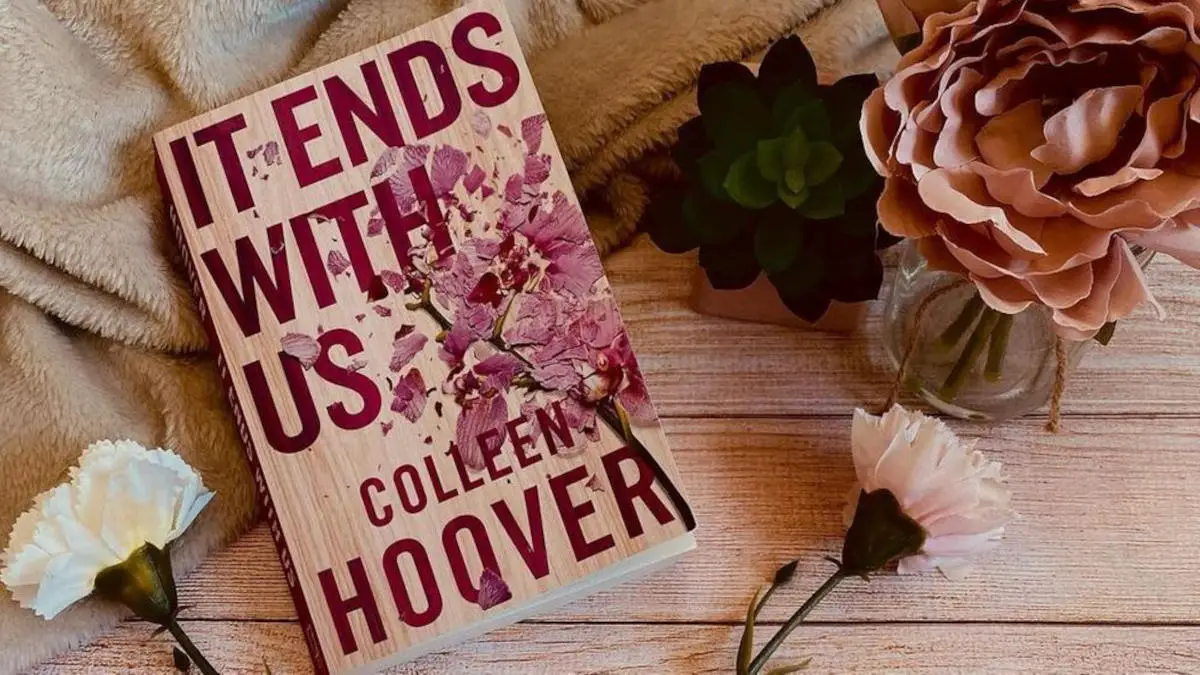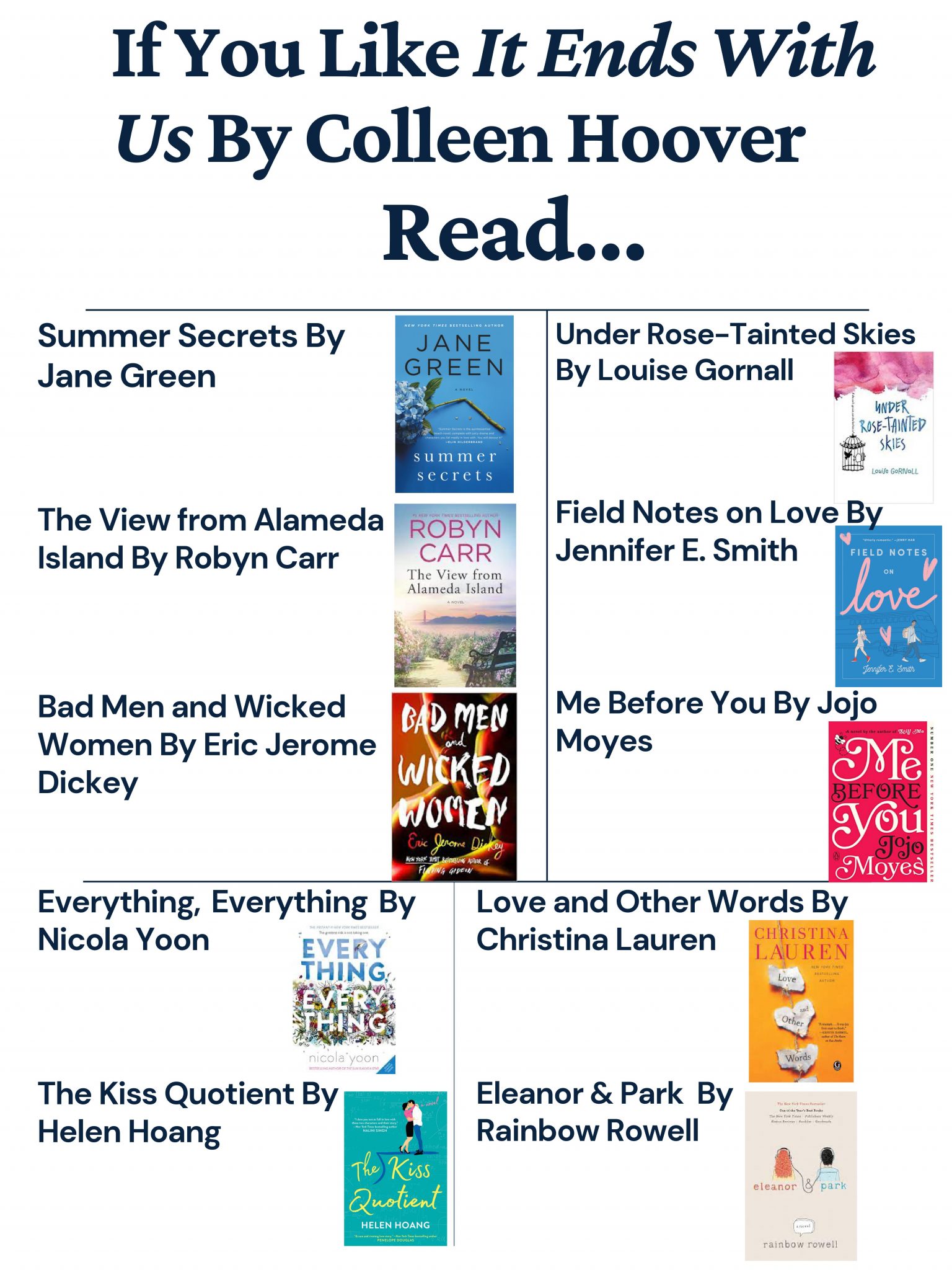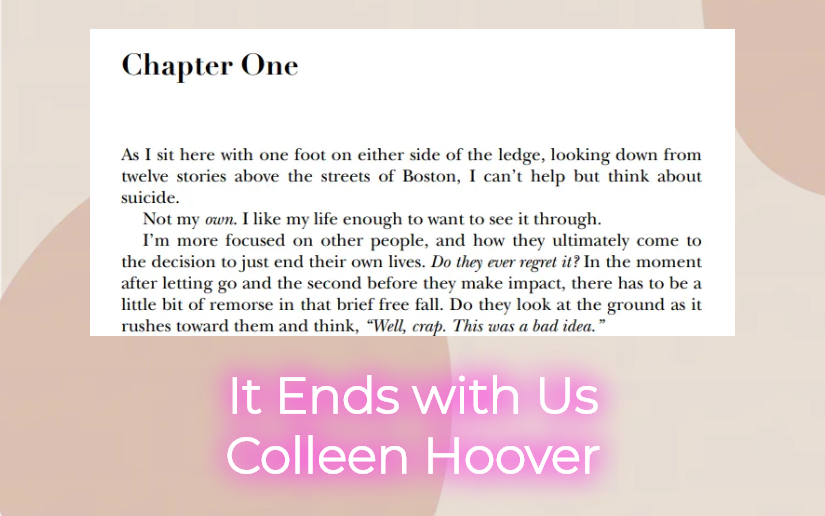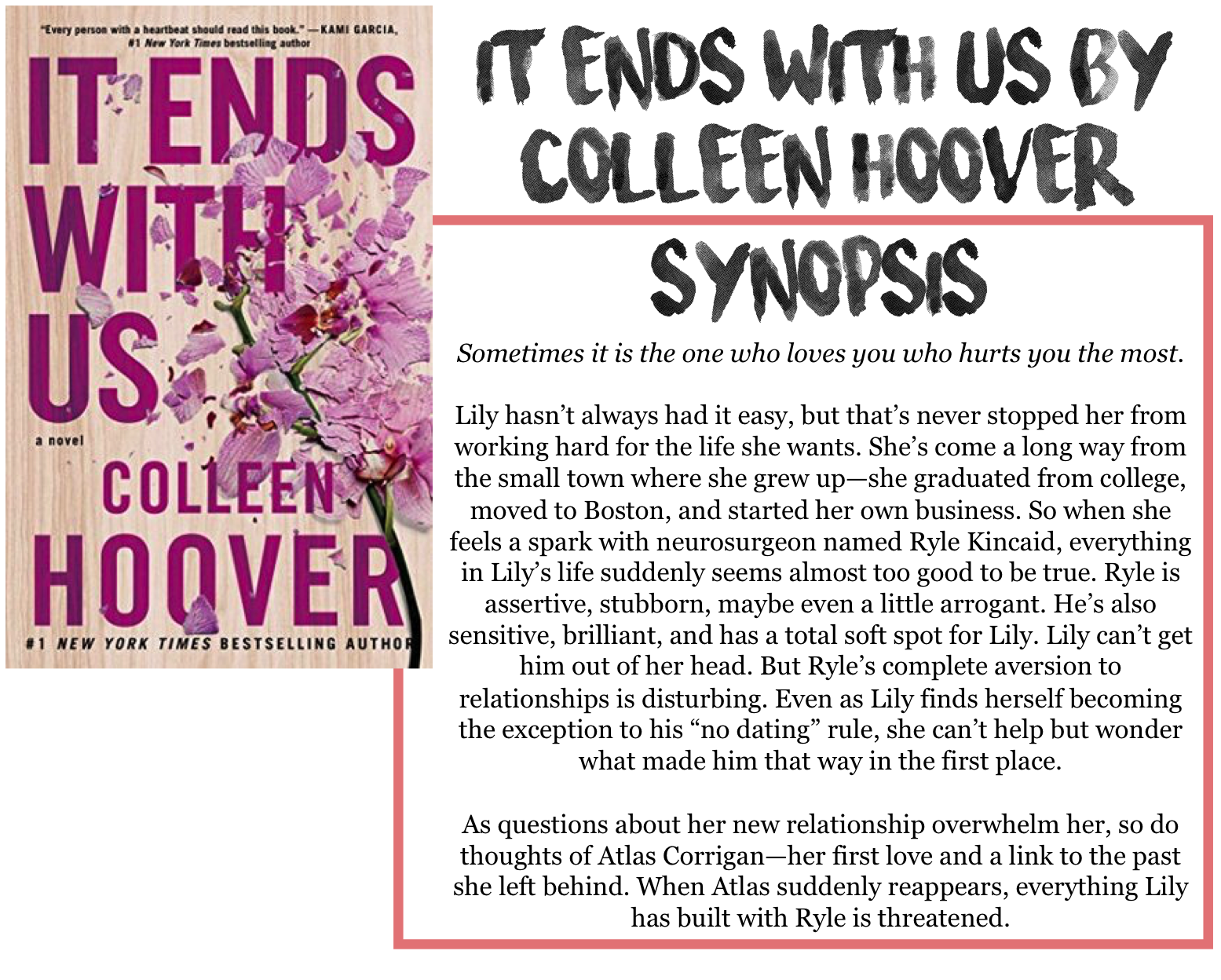A Comprehensive Chapter-by-Chapter Exploration of "It Ends With Us": A Review
Related Articles: A Comprehensive Chapter-by-Chapter Exploration of "It Ends With Us": A Review
Introduction
With enthusiasm, let’s navigate through the intriguing topic related to A Comprehensive Chapter-by-Chapter Exploration of "It Ends With Us": A Review. Let’s weave interesting information and offer fresh perspectives to the readers.
Table of Content
A Comprehensive Chapter-by-Chapter Exploration of "It Ends With Us": A Review

"It Ends With Us" by Colleen Hoover is a contemporary romance novel that delves into the complexities of love, abuse, and healing. The story follows Lily, a young woman who finds herself entangled in a whirlwind romance with Ryle, a charming neurosurgeon. However, their relationship is complicated by Lily’s past trauma and Ryle’s volatile temper. Through alternating chapters, the narrative reveals Lily’s journey as she navigates the tumultuous dynamics of her present relationship while confronting the ghosts of her past.
Chapter-by-Chapter Review:
Chapter 1: Lily
The story opens with Lily, a young woman grappling with the aftermath of a toxic relationship. The chapter introduces us to her vulnerability and her cautious approach to love. Lily’s inner dialogue reveals her fear of repeating past mistakes, setting the stage for the central theme of the novel: the struggle to find healthy love and escape the cycle of abuse.
Chapter 2: Ryle
This chapter shifts perspectives to Ryle, introducing his charming exterior and his struggles with anger management. The reader is presented with a glimpse of the conflicting emotions within Ryle, hinting at the potential for conflict within their relationship.
Chapter 3: Lily
The narrative returns to Lily’s perspective, showcasing her initial attraction to Ryle and her hope for a fulfilling relationship. However, her past experiences with abuse create a sense of unease and doubt, highlighting the internal battle she faces as she navigates her feelings.
Chapter 4: Ryle
This chapter deepens our understanding of Ryle’s character by exploring his past and the reasons behind his anger issues. The reader gains insight into his personal struggles and the underlying factors contributing to his volatile behavior.
Chapter 5: Lily
Lily’s past relationship with Atlas, a kind and supportive man from her childhood, is introduced. This chapter reveals the depth of their connection and the comfort she finds in his presence. Atlas represents a stark contrast to Ryle, symbolizing the healthy and nurturing love that Lily yearns for.
Chapter 6: Ryle
The tension between Ryle and Lily intensifies as their relationship progresses. Ryle’s possessive nature and controlling behavior begin to manifest, causing Lily to question the stability of their connection.
Chapter 7: Lily
Lily’s internal struggle intensifies as she grapples with the conflicting emotions she experiences in her relationship with Ryle. The chapter showcases the toll his actions take on her emotional well-being, highlighting the destructive nature of abuse.
Chapter 8: Ryle
Ryle’s anger issues escalate, leading to an outburst of violence that shatters the facade of their seemingly perfect relationship. This chapter marks a turning point in the narrative, revealing the true nature of Ryle’s behavior and forcing Lily to confront the reality of the situation.
Chapter 9: Lily
Lily confronts the consequences of Ryle’s actions and begins to realize the extent of the abuse she has endured. The chapter depicts her struggle to process the trauma and make sense of the destructive patterns in her life.
Chapter 10: Ryle
Ryle’s perspective offers a glimpse into his own internal turmoil and the guilt he feels after his actions. However, his self-awareness is limited, and he struggles to fully acknowledge the gravity of his behavior.
Chapter 11: Lily
Lily embarks on a journey of healing, seeking support from friends and family. This chapter highlights the importance of seeking help and the strength found in building a supportive network.
Chapter 12: Ryle
Ryle attempts to reconcile with Lily, expressing regret and seeking forgiveness. However, his actions speak louder than his words, and Lily struggles to trust his promises of change.
Chapter 13: Lily
Lily confronts her past trauma, revisiting the memories of her abusive childhood and the impact it has had on her life. This chapter showcases the lasting effects of trauma and the importance of confronting it to achieve healing.
Chapter 14: Ryle
Ryle’s perspective reveals his internal battle with his anger and his desire to change his behavior. The chapter highlights the complexities of abusive relationships and the challenges faced by abusers in seeking help.
Chapter 15: Lily
Lily makes a life-changing decision, prioritizing her own well-being and breaking free from the cycle of abuse. This chapter marks a turning point in her journey, showcasing her strength and resilience.
Chapter 16: Ryle
Ryle grapples with the consequences of his actions and the loss of Lily. The chapter portrays his struggle with the reality of his behavior and the pain he has inflicted on her.
Chapter 17: Lily
Lily embraces a new chapter in her life, focusing on healing and self-discovery. This chapter emphasizes the importance of self-love and the power of finding strength within oneself.
Chapter 18: Ryle
Ryle’s perspective provides closure to his journey, offering a glimpse into his ongoing struggle with anger and his desire for redemption. The chapter suggests that healing from abuse is a lifelong process, requiring constant effort and self-reflection.
Chapter 19: Lily
The story concludes with Lily finding happiness and fulfillment in a healthy and loving relationship with Atlas. This chapter represents the ultimate triumph of love and healing, emphasizing the importance of finding a partner who respects and supports you.
Related Searches:
- Colleen Hoover Books: Explore other popular novels by Colleen Hoover, including "Ugly Love," "Confess," and "Verity."
- Toxic Relationships: Learn about the signs of toxic relationships and how to identify and break free from them.
- Domestic Violence: Gain knowledge about the different forms of domestic violence and the resources available for victims.
- Trauma Healing: Discover information on the process of healing from trauma and the various therapeutic approaches available.
- Love and Relationships: Explore resources on healthy relationships, communication, and navigating the complexities of love.
- Character Analysis: Analyze the characters of Lily, Ryle, and Atlas, exploring their motivations, flaws, and growth throughout the novel.
- Themes in "It Ends With Us": Delve deeper into the central themes of the novel, including love, abuse, healing, forgiveness, and second chances.
- Book Club Discussion Questions: Find engaging questions to spark discussions and deeper understanding of the novel among book club members.
FAQs:
Q: Is "It Ends With Us" based on a true story?
A: While Colleen Hoover has stated that the novel is not based on a specific true story, she has drawn inspiration from real-life experiences and research on domestic violence.
Q: What is the message of "It Ends With Us"?
A: The novel emphasizes the importance of self-love, seeking support, and breaking free from harmful relationships. It highlights the strength found in healing from trauma and the power of finding healthy love.
Q: Is Ryle a redeemable character?
A: While Ryle expresses remorse and attempts to change his behavior, the novel does not offer a clear answer to his redemption. The ending leaves room for interpretation and invites readers to reflect on the complexities of abuse and forgiveness.
Q: What is the significance of the ending?
A: The ending of "It Ends With Us" is bittersweet, highlighting the challenges of healing and the importance of moving forward. It emphasizes the power of finding happiness and love after experiencing trauma.
Tips:
- Engage with the characters: Pay close attention to the internal struggles of Lily, Ryle, and Atlas. Explore their motivations, fears, and growth throughout the narrative.
- Consider the themes: Reflect on the central themes of the novel, including love, abuse, healing, forgiveness, and second chances. How do these themes resonate with your own experiences and perspectives?
- Discuss the book: Share your thoughts and interpretations with friends, family, or book club members. Engage in meaningful conversations about the novel’s impact and its message.
- Seek support: If you or someone you know is experiencing domestic violence or struggling with trauma, reach out for help. There are numerous resources available to provide support and guidance.
Conclusion:
"It Ends With Us" is a powerful and thought-provoking novel that explores the complexities of love, abuse, and healing. Through the compelling narratives of Lily and Ryle, Colleen Hoover sheds light on the devastating impact of domestic violence and the strength found in breaking free from harmful relationships. The novel serves as a reminder that healing is a journey, and finding healthy love and happiness is possible even after experiencing trauma. By engaging with the characters, exploring the themes, and reflecting on the message, readers can gain valuable insights into the complexities of human relationships and the importance of seeking support and prioritizing their well-being.








Closure
Thus, we hope this article has provided valuable insights into A Comprehensive Chapter-by-Chapter Exploration of "It Ends With Us": A Review. We appreciate your attention to our article. See you in our next article!